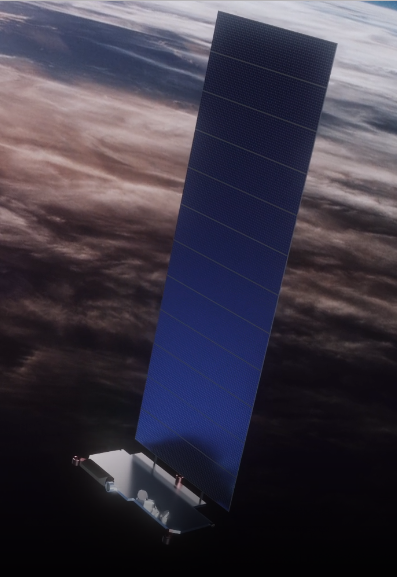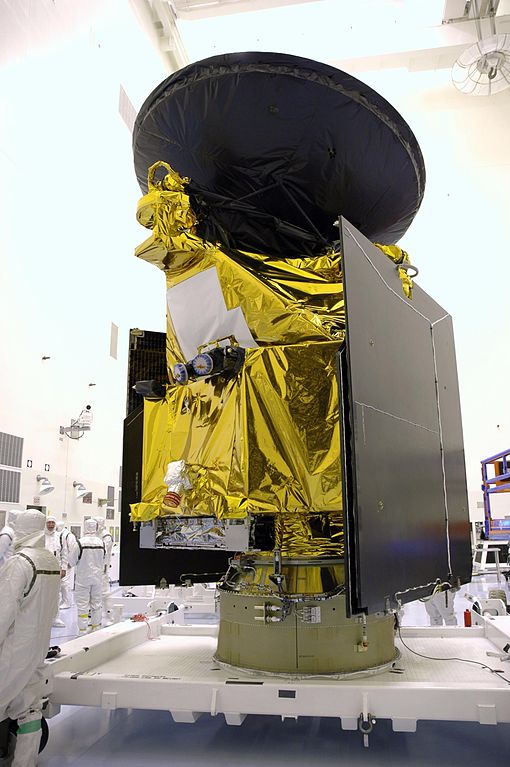[Scott Manley covered the astronomical side of this issue far better in his video; I recommend watching it if you haven’t already.]
There’s been a lot of contention lately over the impact that satellite internet megaconstellations will have on the night sky. Specifically, astronomers are concerned by the streaks that moving objects in orbit will introduce when imaging objects in deep space with advanced telescopes. A century ago, an irate astronomer remarked angrily on the streaks which asteroids left on his photographic plates, calling them “the vermin of the skies”. Satellites, which have a much higher relative velocity to the celestial sphere than asteroids, will only be more problematic.
This conversation only started, of course, after SpaceX had actually launched hardware for its long-awaited Starlink satellite internet service. The first sixty satellites (out of thousands planned) are now making their way up to their intended orbits. The initial passes have been very bright and visible—at least as far as astronomers are concerned. I’ve tried to spot the cluster multiple times, but haven’t seen it yet.
Launching new satellites isn’t a huge issue; astronomers have had satellites to contend with since 1957. The concern here is driven by the large number of satellites in question. SpaceX is talking about up to 12,000 satellites in its Starlink network, and that’s not the only new megaconstellation being proposed. Given how bright these first few satellites have been, should we be worried that the night sky will soon be littered with new lights?
The truth is that we don’t know.
The Starlink satellites currently giving stargazers trepidation may not be representative of what is actually to come. These satellites are currently at a lower altitude than their operational orbits, and will not be entering their operational configurations until they reach said orbits. The brightness of a satellite is a function of the input light source, the reflectivity of the surface(s) in question, the orientation of the surface relative to the observer, and the distance from said observer.
The input light source is the Sun, which has a sufficiently invariable brightness to be considered constant. The reflectivity of a satellite on orbit, too, is essentially fixed (material degradation may be a factor, but a relatively insignificant one for a well-designed spacecraft). However, the initial orientation of the spacecraft probably isn’t final, and the destination orbits are several hundred kilometers above the insertion orbit. (This was probably so any non-functioning satellites would decay back into the atmosphere quickly, while a functional unit could make its way to altitude using the onboard electric propulsion system.)
Once the satellites reach their final altitudes and attitudes, we’ll be able to fully assess their impact on amateur stargazing and professional astronomy. It is entirely possible that in the destination orbits, the total light reflected will be well within the range of existing satellite constellations.
But what if it isn’t? In that case, there are two basic strategies for reducing the impact of any given satellite on astronomy: change the configuration, or change the spacecraft albedo.

Rendering of a Starlink spacecraft from the project website.
Configuration is heavily governed by the mission purpose—in the case of Starlink, a flat, nadir-pointing (i.e., ground-facing) array of antennae, and a large solar panel extending upwards. Judging by the promotional shots, the spacecraft is probably using a gravity-gradient strategy for stabilization; switching to a different configuration would probably cause issues with the control (and thus payload performance) of the satellite.
The other option is reducing the albedo of the spacecraft surfaces. Albedo is a technical term used in astronomy and planetary science to describe the percentage of light striking a body that is re-transmitted into space. A snowball has a very high albedo, a lump of coal has a much lower albedo. When estimating the size of distant objects, whether we assume the body is more coal-like or snowball-like has a big impact on what resulting number we get.1
Making the surfaces of the Starlink spacecraft darker would reduce the apparent brightness, but introduces a new difficulty: thermal control. Maintaining the internal temperature of a body in space is a lot harder than on Earth, because it can’t convect heat away through the air or conduct it into the ground. Only by radiating heat away can the vehicle avoid overheating to the point of failure.
This understandably challenging. Considering the intense incident radiation from the Sun and other sources, keeping spacecraft from overheating is a serious challenge. The easiest way to do this is to avoid bringing the heat in to begin with—in essence, reflecting away sunlight before its energy can be absorbed. This is why so many spacecraft are wrapped in reflective insulators.
The Mars Reconnaissance Orbiter prior to launch. Nobody on Mars cares about light pollution…yet.
A darker satellite, then, won’t reflect as much sunlight back towards Earth, but at a cost of more advanced thermal control systems. The satellite will need to retain the heat and then radiate it away when it passes through Earth’s shadow. Of course, satellites don’t always pass through the shadow—for a period of at least a month or two each year, spacecraft in higher inclination orbits find themselves orbiting roughly in-line with the terminator, and thus do not experience darkness for extended periods. Maintaining equipment temperatures within the acceptable ranges would be much, much more challenging for a low-albedo spacecraft.
Now, if that permanently solved the astronomers’ problems, it would probably be worth doing and might even warrant legislation to that effect.2 However, the spacecraft would still have to radiate that heat away somehow. Generally, spacecraft emit infrared radiation to balance the thermodynamic books, and since this almost always has to be done at night, it will still play havoc with non-visible astronomies. IR and other wavelengths would still have satellite streaks running through them, significantly complicating the regulatory question.
For what it’s worth, Elon Musk seems to favor the albedo reduction approach:
It may also be possible to reduce the number of satellites in question as our telecommunications technology improves, but I really don’t consider this a major avenue for improvement, for the simple reason that fast Internet is running up against the lightspeed limit. Megaconstellation planners want customers to videoconference and play multiplayer video games through their systems—and if they aren’t providing that capability, they’re not actually competing with ground-based monopolies. So maybe we can make bigger satellites and optimize for less light, or put the satellites further away from Earth to increase the diffusion area, but probably less so than one might naïvely expect.
As space industrializes, though, we’re going to need to think about these sorts of issues more and more. Satellite streaks aren’t a new problem; there’s been thousands of satellites launched since the start of the Space Age, about half of which remain in orbit. When we consider major pieces of space debris—where major, here, means “of concern to astronomers”—then the number is non-trivially larger. Many of those satellites, though, have been in geostationary orbit. As we start talking about massive numbers of units, the desire to save money and/or increase performance by reducing the necessary mission ΔV becomes a stronger incentive, and thus we have serious concerns about the future of the night sky.
At this point, I think we as a civilization need to decide how much we value the night sky as a resource for pleasure and scientific discovery, and implement policies accordingly. I don’t just mean taking effective albedo into account when licensing satellites, of course, but also giving some thought to the damage that ordinary light pollution does. This is a long-standing problem for both professional and amateur astronomers, and certainly should be part of our calculus. The “damage” that any given satellite does to the night sky is trivial compared to, say, a nearby gas station.
Just as we should not be banning gas stations for the crime of having lights, so we should not be immediately passing a moratorium of new satellites. The gas station provides value, including its lights—it’s safer to buy fuel after sunset because of them. Satellites provide value, and even their appearance in the night sky can be a positive. People like spotting satellites. It’s fun and exciting to see things in space and to speculate about just what they’re doing up there. Among other things, it drives positive public interest in space science and exploration.
I don’t think that there’s going to be a simple answer to the problem of light pollution from megaconstellations. We have to balance the positive values that the satellites provide, versus their impact to the positive value that space science provides, with consideration for the cost of modifying the satellite or constellation designs to reduce their negative impact. Like so many complex issues, it’s a question for astronomers, spacecraft engineers, and the public at large to think about and manage over the long term, every time we decide whether we want to put up more hardware in near-Earth space. There isn’t a silver bullet here—and I wouldn’t trust our political apparatus to fire on target even if there were.
1Perhaps the most obvious example of this is Pluto, which was originally assumed to be more coal-like, and so astronomers estimated a very large body given the known brightness and distance from the Sun. As time went on, additional evidence mounted suggesting a more snowball-like world, culminating in the discovery of Charon in 1978. (The period of a moon tells us with great accuracy the mass of the planet it orbits.) As it turns out, Pluto has a higher albedo than any planet in the Solar System besides Venus.
2An idea I had was some sort of Pigouvian tax, whereby satellite manufacturers would be charged in proportion to the value of scientific knowledge that each marginal satellite prevented from being gathered. This would function as an incentive to improve the configuration or thermal control systems of the satellite—and, over the long term, thermal control technology as a whole—to reduce the average spacecraft albedo. The challenge, of course, would be quantifying the scientific value lost and the cost of the changes (spacecraft cost estimation is a subfield in itself and by no means something we can reasonably hand to regulators in checklist form).

